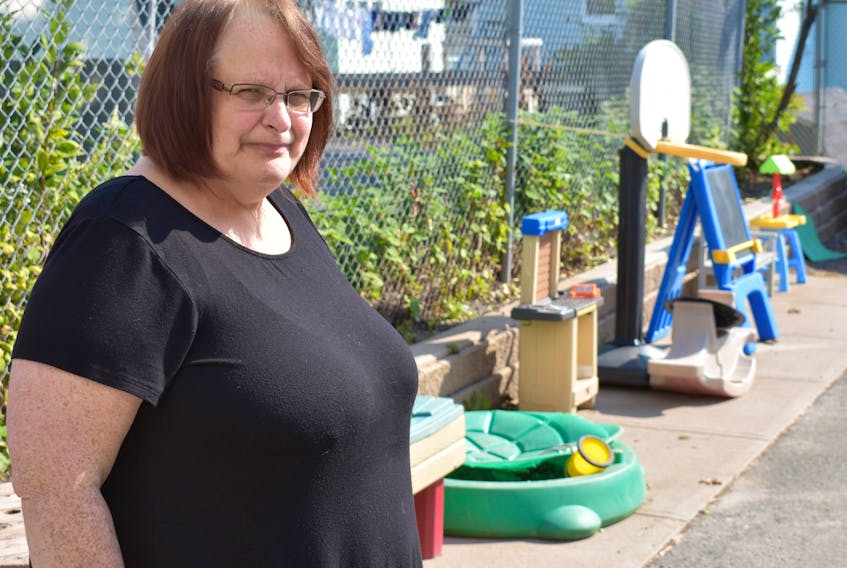Stellarton, N.S.
Thelma Edwards could really use a break about now.
She is executive director of the Family Home Child Care Society, a Stellarton-based nonprofit that screens, approves, trains, monitors and supports caregivers who provide day care in their own homes to families throughout Pictou County.
“It is our responsibility to ensure that the caregivers abide by the Society’s policies and follow the Day Care Regulations,” she said.
In total, the agency oversees about 20-25 homes with approximately 90-100 children, mostly subsidized. The Family Home Child Care Society gets no money from the child care providers, but is funded by a government grant which is based upon the number of caregivers they have. To help offset costs, they also have an afterschool program and in the past, have had a pre-primary program.
But since last year, when the provincial government started a province wide pre-primary program, she said they've seen their numbers drop, not only at the pre-primary program but also in the number of child care providers working out of their homes. Because the agency grant funding is tied to the number of caregivers the agency oversees, the Society is having trouble balancing the budget.
Dropping from 25 to 20 caregivers for instance means a reduction in the grant by $8,000. While that income fluctuates, the fixed costs remain the same.
"Whether I have 20 caregivers or 25, my fixed costs are the same."
Last week Edwards approached Stellarton Council and asked if they'd be willing to help lighten her load a bit by reducing her property tax bill for the child care facility.
"Since we opened this building we’ve been paying close to $12,000 a year in taxes,” Edwards said. "It’s about 23 per cent of my fixed cost for our family day care cost."
She said the cost of taxes is almost double what her mortgage rate is for the building and is hoping that the Town of Stellarton will consider revising the tax classification from business to residential given their nonprofit status. Staff at the town said they will review the matter and get back to her.
Edwards is also looking at ways to expand the afterschool program at the site to help address the shortage. She worries her problems could become worse if the pre-primary program expands to Stellarton where the majority of her caregivers are.
"When it does happen, there’s going to be a problem," she said.
Part of the reason that it has such an impact on people caring for children in their home is that child care workers are restricted in the number of children under 3 and under they can care for. While there is a large demand for infant care, she said the requirements for infant care are much more stringent. By taking out the 4-year-olds, it's hard for the workers to make enough to make it worthwhile.
"That’s going to take out a big chunk of children. To make this work for most of my caregivers you need four children full time.”
While she understands the motive and believes in early childhood education, Edwards said she is frustrated that child care workers such as herself weren’t consulted more before the pre-primary program was announced and laid out.
"The government just dropped that on us like a bomb." she said.
She believes it's a case of where they got the cart before the horse – “and the cart is running away with them."
But Heather Fairbairn, communications advisor for the Department of Education and Early Childhood Development said they are in fact listening to the concerns from the child care sector.
“We recognize the landscape is changing with the introduction of pre-primary and we continue to invest in the sector to help operators adapt,” she said. “The fact is, there’s never been a better time to be working in early childhood education in Nova Scotia.”
In the past year, the sector grew by about 600 spaces between family home and child care centres; and the department has plans for the continued expansion of 1,000 additional spaces in the coming year. Last year, she said they consulted broadly with the child care sector and families to better understand their needs. In response to that feedback, she said the department introduced an infant incentive as well as improved subsidy rates for families and are implementing a new funding model to better reflect the needs of the sector.
“We’ve also made adjustments to the regulations to help operators provide more opportunities for before and after school care, and to support work and learn models of training. And, we have launched several workforce recruitment and retention initiatives to support their HR needs.”
In the coming months, she said they will be further engaging family home and centre providers in a regulatory review to ensure the department is best meeting providers’ needs, while continuing to ensure quality early learning and child care options for children and families.









